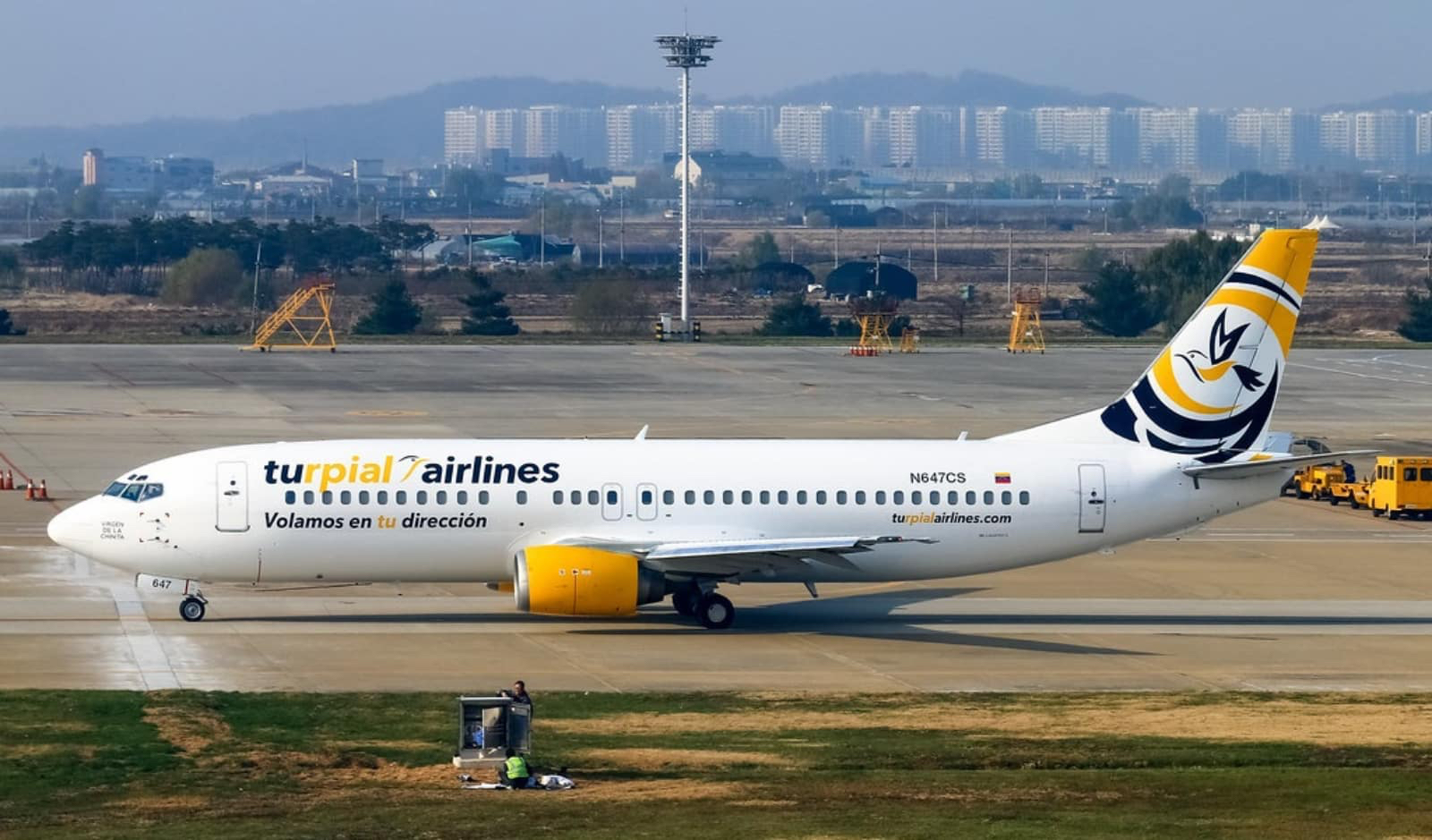Overview
• Operator: Turpial Airlines
• Aircraft Model: Boeing 737-400
• Registration: YV622T
• Flight Number: T9-881
• Route: Bogotá (BOG) → Valencia (VLN)
• Date: 2 March 2025
• Occupants: Unknown
• Casualties: None
• Aircraft Status: Under inspection
• Investigation: Led by Colombia’s DIACC with NTSB participation
⸻
Incident Summary
Turpial Airlines flight T9-881, a Boeing 737-400, experienced a cabin pressurization failure shortly after departure from Bogotá while climbing through 15,000 feet.
The crew stopped the climb, declared an emergency, and opted to return to Bogotá. The aircraft landed safely on runway 14R approximately 35 minutes after departure.
Colombia’s DIACC has opened an investigation into the occurrence, with the NTSB joining the probe due to potential safety concerns.
⸻
Sequence of Events
Takeoff & Climb
• The Boeing 737-400 departed Bogotá’s runway 14L normally.
• The aircraft began its climb towards cruise altitude.
• As the aircraft passed 15,000 feet, the crew received pressurization system alerts.
Emergency Decision & Return to Bogotá
• The crew stopped the climb and initiated troubleshooting.
• Unable to restore cabin pressure, the crew declared an emergency.
• ATC cleared the aircraft to return for an immediate landing.
Landing & Ground Response
• The aircraft landed safely on Bogotá’s runway 14R.
• Emergency services were on standby but were not needed.
• The aircraft taxied to the apron, where maintenance teams began inspecting the pressurization system.
⸻
Investigation Findings & Initial Analysis
1. Pressurization System Failure
• The Boeing 737-400 relies on an automatic pressurization system, with manual backup.
• Potential causes of failure include:
• Outflow valve malfunction (failing to regulate cabin pressure).
• Bleed air system failure (insufficient air from engines to pressurize the cabin).
• Faulty pressure sensors or controllers.
2. No Passenger Oxygen Deployment Reported
• Passenger oxygen masks did not deploy, suggesting the failure was detected and mitigated before reaching critical altitude.
• Had the aircraft climbed beyond FL250, oxygen masks would have automatically deployed.
3. Crew Response & Safety Measures
• The crew correctly halted the climb at a safe altitude.
• The decision to return to Bogotá rather than continuing avoided unnecessary risks.
• The controlled descent and landing ensured passenger safety.
⸻
Potential Causes & Contributing Factors
1. Bleed Air System Malfunction
• Possible compressor bleed valve failure, preventing engine bleed air from pressurizing the cabin.
• Aging aircraft components (737-400 is an older variant).
2. Outflow Valve Stuck Open or Faulty
• The outflow valve may have failed to regulate cabin pressure, leading to gradual depressurization.
• Electrical or mechanical failure in the valve actuators.
3. Cabin Pressure Controller Failure
• The automatic pressurization control unit may have malfunctioned, preventing normal pressurization.
• Possible wiring or sensor issues affecting altitude readings.
⸻
Safety Recommendations & Future Prevention
1. Comprehensive Inspection of the Pressurization System
• Check bleed air valves, outflow valve actuators, and pressure sensors for faults.
• Conduct system tests before returning the aircraft to service.
2. Enhanced Maintenance Procedures for Aging Aircraft
• Given the 737-400’s age, airlines should increase frequency of pressurization system checks.
• Predictive maintenance techniques (monitoring system performance before failures occur).
3. Crew Training & Emergency Preparedness
• The crew executed the emergency response flawlessly, but continued simulator training on pressurization failures can further enhance preparedness.
⸻
Conclusion
Turpial Airlines flight T9-881 experienced a pressurization failure during climb-out from Bogotá, prompting a safe return.
The crew acted swiftly, preventing a potential cabin altitude emergency. The exact cause—whether a bleed air system issue, outflow valve failure, or pressure controller malfunction—is under investigation by Colombia’s DIACC and the NTSB.
The aircraft remains grounded for maintenance and safety checks before returning to service.
⸻
Disclaimer
“This report is based on available information as of 7 March 2025. While every effort has been made to ensure accuracy, the completeness of the details cannot be guaranteed. If you are the rightful owner of any referenced materials and wish them removed, please email takedown@cockpitking.com.”
